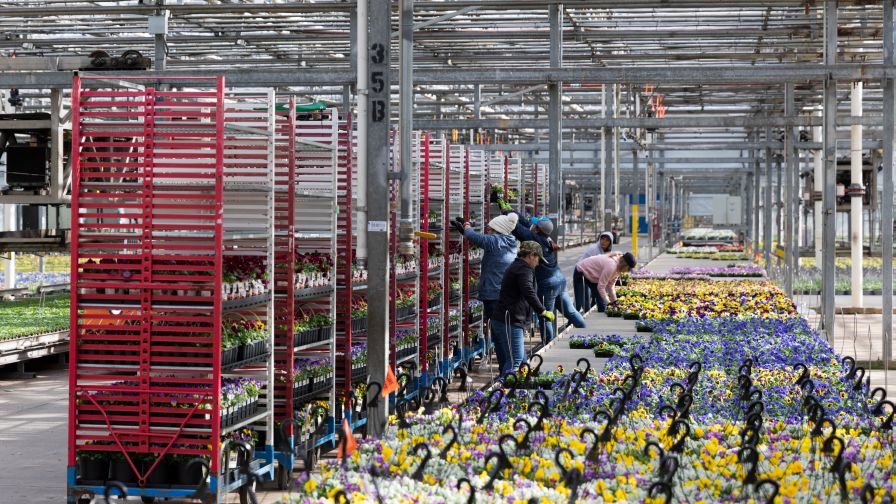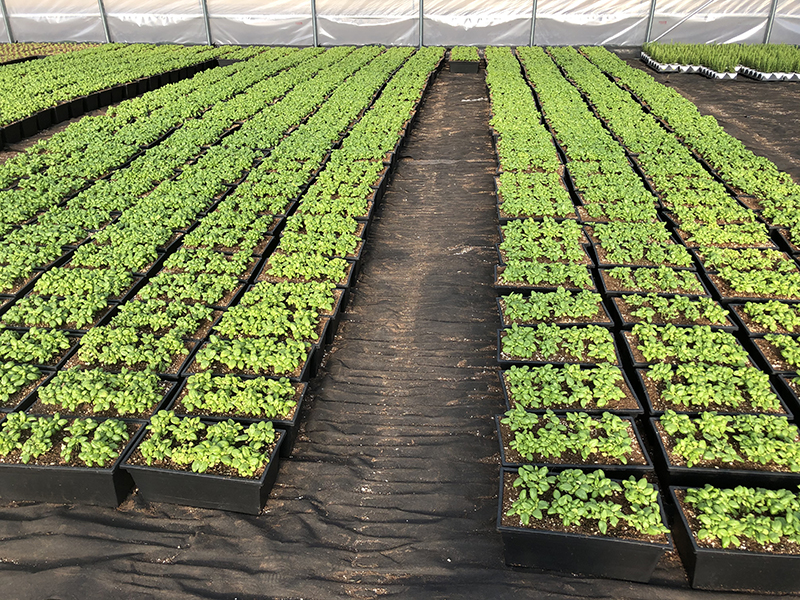Uncertainty = Opportunities (And Threats)
Planning is an ongoing process and adjustments have to be made on a regular basis. Some businesses try to develop a 5-year plan. Others are so far-sighted that they have identified what they would like to achieve in 10 to 20 years.
On the other hand, I know of businesses that do little or no planning and prefer to "fly by the seats of their pants."
There is no doubt that with all the uncertainty today and the negative mood of many people, it is difficult to predict what conditions will be with us next spring. We see economic conditions that are very unstable, for example, huge government deficits, increasing inflation, rising interest rates, the war on terrorism, incompetence in big business and government, as well as unsound business practices throughout our society. This causes enough anxiety to keep everyone awake at night.
While most of these factors are beyond our control, we have to try to determine where our customers will be next spring, what they will want to buy and how we can develop products to meet their demands.
A series of articles have been written asking the question, "Is gardening dead?" I don’t believe an industry worth over $5 billion is dead. Just because our industry has not grown by 5 or 10 percent a year doesn’t mean it is doomed. It shows the industry has been moving into a mature stage of development.
When we had double-digit increases in sales, we had little need to change. However, in order to sustain our industry today and to grow it in the future, change is necessary.
In his article "Change" in the May 2005 issue of Fast Company magazine, Alan Deutschman asked the question, "Why is it so darn hard to change our ways?" He discussed five myths.
MYTH I – "Crisis is a powerful impetus for change."
In reality, Deutschman says, 90 percent of people who have had coronary bypasses go back to their unhealthy lifestyles. From a horticultural business perspective, I’ve seen many of our small operations continue to practice poor business management even when they are facing bankruptcy. They love to grow plants, but they know or do very little about marketing, promotion and customer or employee relations. I can point to the loss of about 2,000 businesses in less than four years to make this drastically clear.
The good old days of "grow good plants and the customers will beat a path to your door" are gone. Sure, you need to be able to produce good plants, but you also have to know how to market them.
MYTH II – "Change is motivated by fear."
Many people deny that anything is wrong. It is easy to ignore what might happen. It is more realistic to identify what is happening and develop a positive vision of what changes are needed to make it possible for your business to survive. There is an old saying that you must have faith or you will live in fear. It is much better to have positive thoughts, sow positive ideas and implement positive actions and reactions.
MYTH III – "The facts will set us free."
If people only believed in facts, no one would gamble. Over $30 billion was spent on casino gambling last year. That $30 billion was not won by patrons. Our thinking is guided by narratives. "I can win a million dollars. I know a person who won $3 million on one slot machine!" No one told you how many people went broke.
Over 50 percent of horticultural businesses fail in the first five years. Also, of all the tens of thousands of businesses started in horticulture, less than 5 percent last three generations.
When I first started at Penn State University more than 50 years ago, I entered a chemistry lecture hall with over 100 other students. It was the largest class I had ever been in. The professor came into the room and the first words out of his mouth were, "Look at the person to your left and to your right. One of the three of you will not complete this course. One of you will either drop it or flunk out." I shook the hands of the persons on my left and on my right and said, "Gee, I’m sorry to hear one of you won’t make it through the course." That is faith, not fear!
MYTH IV – ‘Small, gradual changes are always easier to make and sustain."
In reality, sweeping changes are often easier because they yield results faster. Our industry is notoriously slow in changing. Just look at our history. The principles of photoperiods were known in 1920, yet it took 25 years to implement this knowledge into the floriculture industry. The idea of plug production was conceived in the early 1970s, yet it took at least 15 years to become a major cultural process.
Changes in our marketing, distribution and logistics are as slow or slower in being implemented than changes in our production techniques. While there have been times when I thought the wholesaler was obsolete, we are seeing a resurgence of these businesses in fresh fruit, produce and other agricultural areas. The producers grow the product and wholesalers handle the logistics and marketing.
Some radical changes will need to be made in the ornamental horticulture area to increase the profitability of those involved in all segments of production and marketing.
MYTH V – "We can’t change because our brains become hardwired early in life."
Not true! Our brains have plenty of elasticity. We can continue learning complex, new things all through life if we remain active and involved. Some of the best employees you can hire are retired people with a wealth of knowledge who still want to make a contribution to our society. Many of them have worked in other industries that have problems similar to what we are facing. With their expertise and experience, they can make the problems we face simple to solve.
Finally, in his article, Deutschman asked the question, "What stage of change are you in?" Is the answer 1) Never 2) Someday 3) Soon 4) Now or 5) Forever? Within the horticulture industry, if you are in stage 1, 2 or 3, you are dead in the water. You had better milk your business for all you can and sell it. Stage 4 means you still have possibilities, but be right about what and how you change. Stage 5 means you understand that change is not a one-time experiment. It is a continuous process. Many times, fine-tuning many aspects of your company may accomplish more than one big, major change.
On the other hand, if you have the right vision to see what the future holds and you are right, you can still hit the jackpot! Here is an idea I feel might yield a jackpot for our industry in the container and packaging area, just one word: corn! If petrochemically-derived plastics were the future, corn is now the future of plastics. NatureWorks, a subsidiary of the agricultural giant Cargill, has a cheap way to turn the crop into a substance that’s well suited to the demands of packaging. It’s a polylactic acid or PLA. It’s completely biodegradable, compared to its virtually indestructible petrochemical-based cousin. Why not use this corn-based material in containers for garden plants? The consumer can plant them and have no waste problem.
The PLA market is expected to increase 25 percent annually in the United States by 2008. It is presently being used for food and beverage containers.
I’m sure you can think of several more ideas. Remember, it’s time to change. I hope you stay happy, healthy and change as needed as you plan for the spring of 2007.









